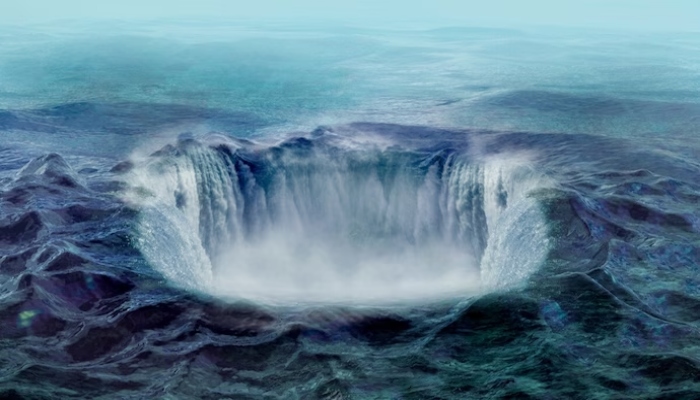
A giant gravity hole has been revealed in the Indian Ocean. The perplexing gravitational anomaly has baffled scientists for years, but researchers at the Indian Institute of Science have now unraveled the secrets of this massive depression in Earth’s surface. The study was published in Geophysical Research Letters.
The discovery reveals that this strange region of the Indian Ocean is a gravity ‘hole’ because it contains less mass than the surrounding areas. It is not the kind of hole that would drain all the water from the planet, but one where the gravitational pull on the seafloor is significantly weaker than average.
This is because the area straddles two tectonic plates and is populated by numerous volcanoes, earthquakes, and hot springs. These geological features significantly impact the distribution of heat, salt, and other material on the seafloor. However, the gravity anomaly lies at the center of this peculiar hotspot, which has fascinated scientists for so long.
Located just off the tip of the Indian subcontinent, the gravity anomaly is a vast depression where the sea floor sinks into a trench. Several theories have been proposed to explain its origin, but they have yet to offer a solid answer. Known as the Indian Ocean Geoid Low (IOGL), it is considered the world’s most prominent gravitational anomaly in scientific terms.
It was first identified in 1948 during a ship-based survey by Dutch geophysicist Felix Andries Vening Meinesz. Its exact origin remains mysterious, but satellite-based surveys have revealed that the sea level just off the tip of the Indian subcontinent dipped on account of the gravitational tug-of-war between this IOGL and the surrounding gravitational ’highs.’ Scientists have speculated that a massive, whirling vortex of hot, pressurized mantle material may have caused it.
But new research by two scientists from the Indian Institute of Science has uncovered an alternative explanation. Based on computer simulations of plate tectonic movements over the last 140 million years, they believe the anomaly may have been caused by the African Blob, a massive lump of mass in the Earth’s mantle lurking 600 miles beneath Africa.
The blob is thought to have been formed from the remnants of the Tethys Ocean, an ancient ocean that separated two supercontinents named Laurasia and Gondwana 200 million years ago. Around 120 million years later, what is now India drifted north into the Tethys Ocean, forming the Indian Ocean.
This leaves a large, dense chunk of the mantle behind, and as this chunk drifts, it loses its ability to pull on the surrounding area. Eventually, this leads to the formation of a gravity anomaly like the one that exists at the Indian Ocean’s southern end. Scientists believe that the IOGL will persist as long as temperatures in this part of the mantle remain stable, but once it shifts, it will dissipate. The discovery will help scientists better understand the processes that drive the plate tectonics of the Indian Ocean and beyond.


